In conversation with Adekemi Kudehinbu, Jacqueline Suowari sheds light on how she began her journey as a ball pen artist, the reasons behind her focus on female subjects and how society groups certain emotions along gender lines.
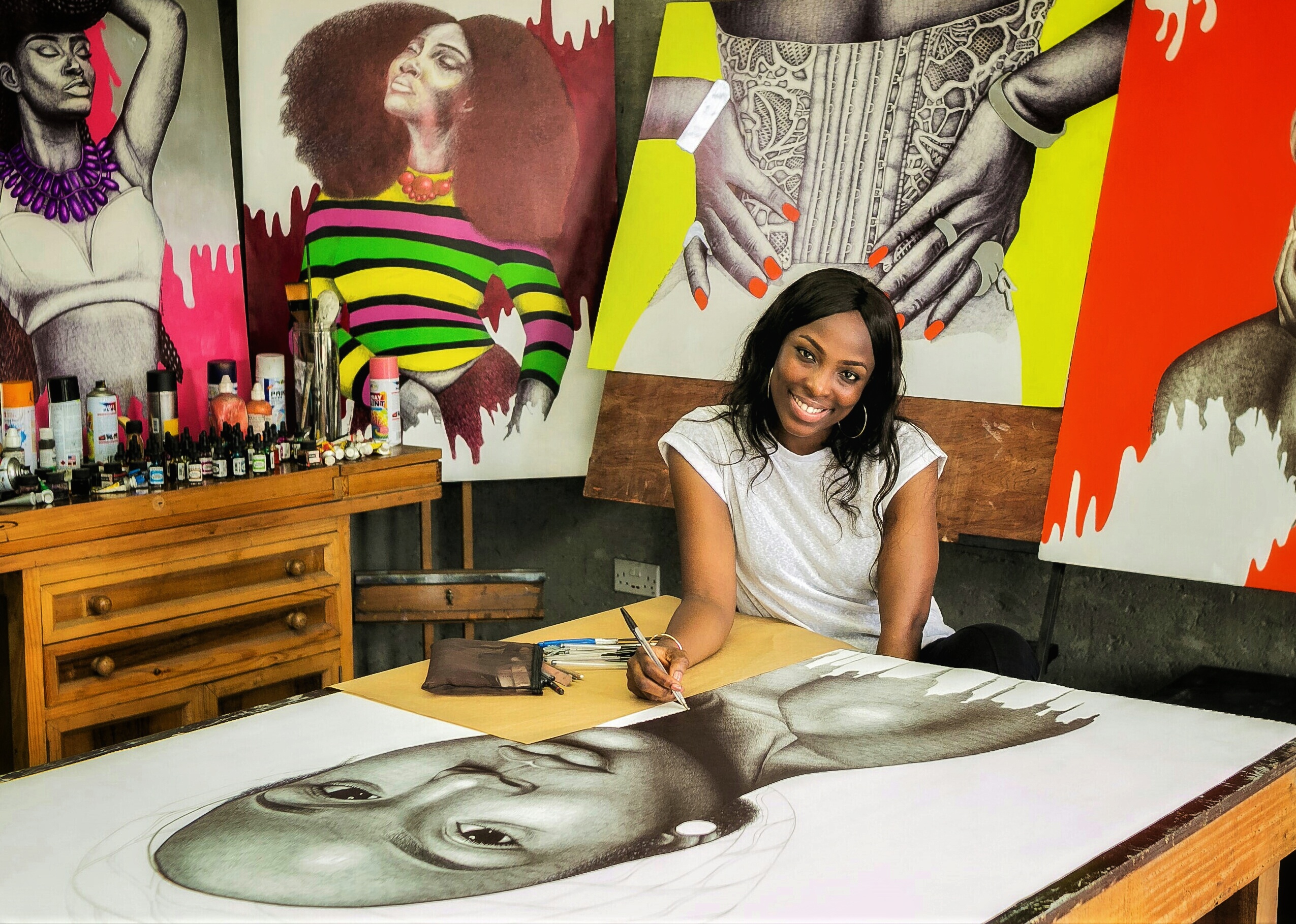
Combining an enduring love for drawing with an eye for intricacies, Jacqueline Suowari creates vibrant and lifelike ballpoint pen drawings. Growing up in Zaria, Suowari’s love for drawing was apparent from an early age. But after university, she focused on painting, having been led to believe that was the definition of being an artist. According to her “The more I tried to paint the more I realized my strength was in drawing.” Against all odds, she revived her passion for drawing and stuck with it until she got representation from Avant Gallery with spaces in Miami and New York City. Suowari talks with The Sole Adventurer (TSA) about her art and the journey to focusing on pen drawing.
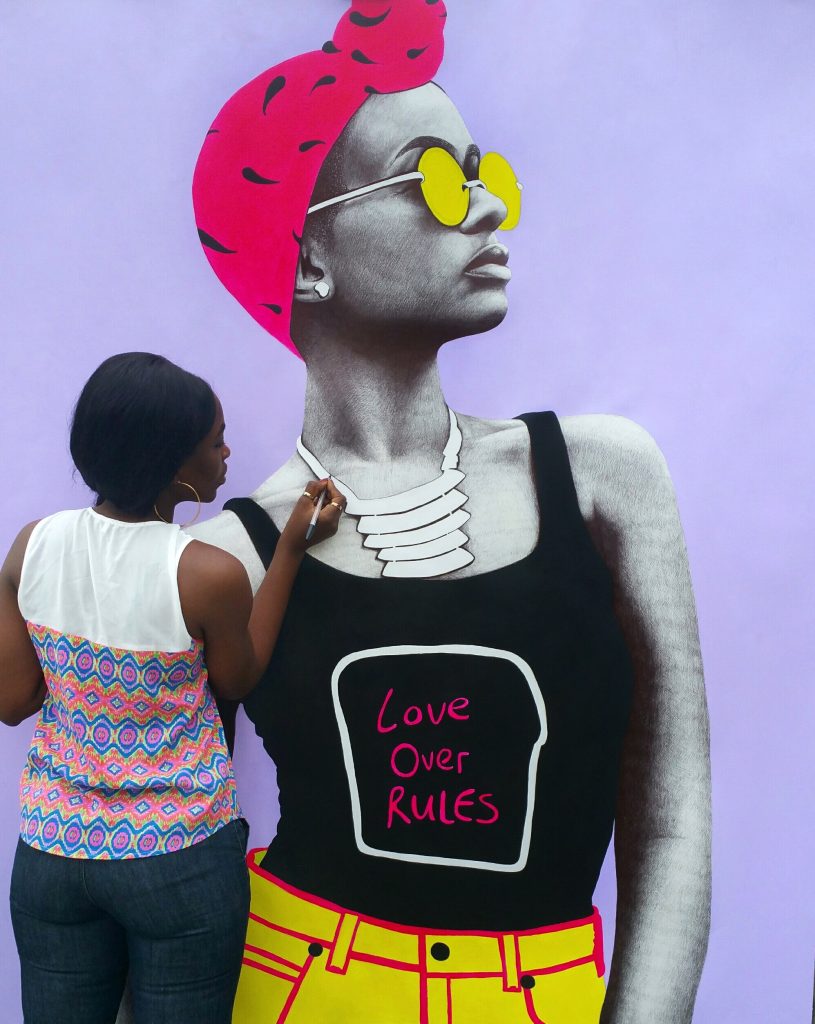
Adekemi Kudehinbu: Can you remember your first drawing?
Jacqueline Suowari: I can’t remember the first drawing exactly, but I can remember some of my first drawings. When I was about five years old, we had this illustrated children’s bible and I drew and coloured the characters in it. Thinking about it now, I’m sure they were very hideous drawings.
A.K: You studied Fine Art and Design at the University of Port Harcourt and majored in Painting. Why the focus on ballpoint pen drawing?
J.S: By the time I was in secondary school, I’d started drawing with pen. I scribbled on my notebooks with blue pens. I loved the contrast I got with pen and I was pretty good with it. But when I got into university, I was told pen was not a traditional art medium so I moved away from it and focused on pencil, charcoal and pastel. But, they never quite had that thing. What gets me about ballpoint pen is the individuality of the strokes. I’ve never been a hyperrealist artist. I like art that offers new details each time you look at it. I like art that is complex; art that has intricacies. With the ballpoint pen, I’m able to create those intricacies. I actually tried it with charcoal, pastel and pencil—with pencil, I drifted from normal pencil to 2b, 3b, 5b, but I didn’t get what I want.
After school, I was a painter for a while and my paintings sold pretty well. At exhibitions, people would praise my pen drawings enthusiastically, but they would tell me, “You know that drawings don’t really have value like that. People don’t really buy drawings in Nigeria.” Then in 2011, I was invited by Mr. Duke Asidere to submit works for an exhibition. I was very excited because the request was for drawings. While making the pieces for the exhibition, I decided to try one with pen. At first it was weird because I’d forgotten how to draw with pen but in the end the piece turned out so nice. It was a drawing of Mama Ekundayo from a photograph by TY Bello. I looked at this drawing and a light bulb switched on in my head. That was when I decided to stick with ballpoint pen drawing.
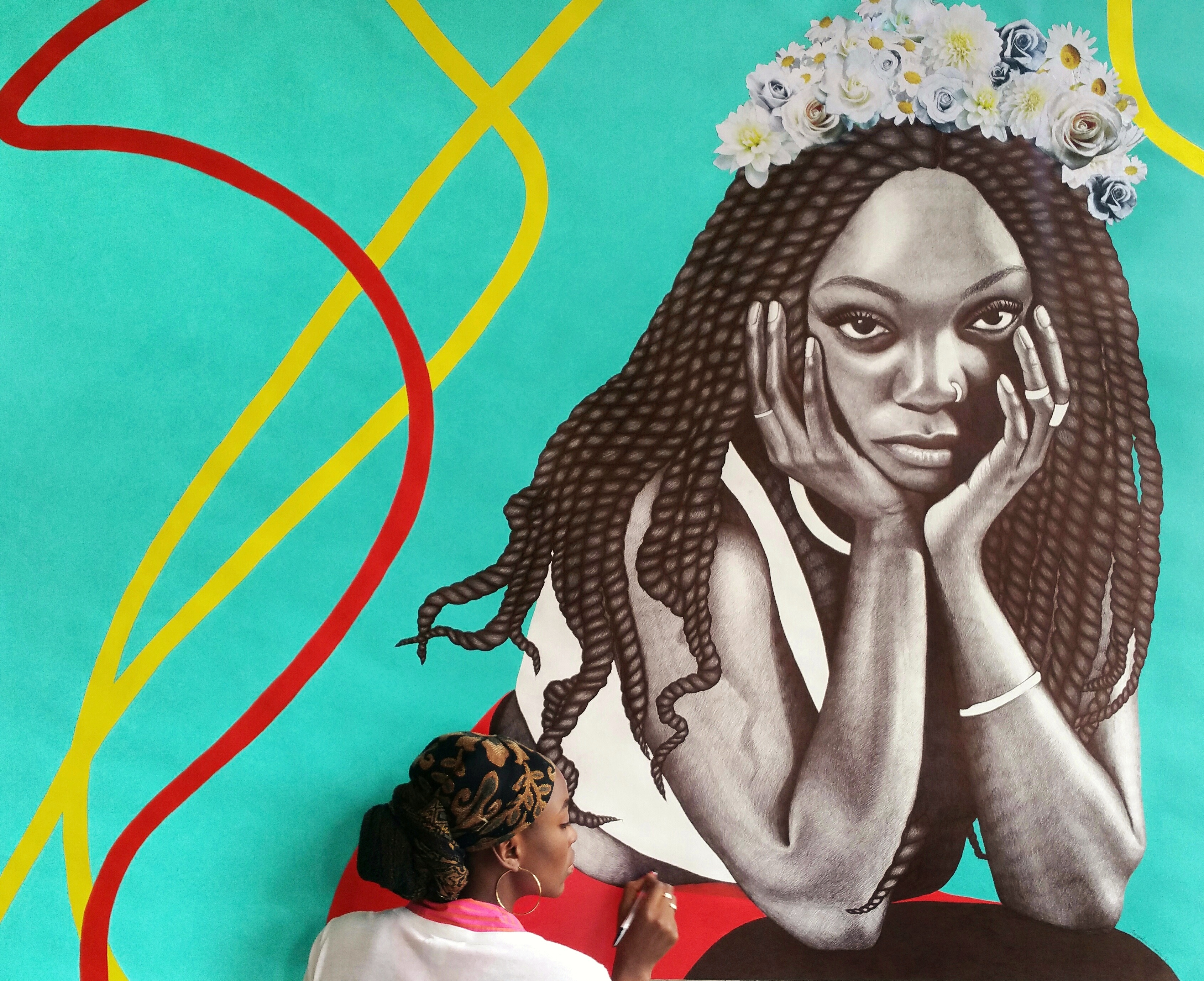
A.K: How are these works received so far?
J.S: In the beginning people expressed concern about my decision to focus on drawing with ballpoint pens, especially as no one bought them at the time. I’ll forever be grateful to late Ms. Bisi Silva, who shook the system and opened a room for contemporary art. She created that space where people could accept works like mine as art. Her movement helped to increase my acceptability in Nigeria.
A.K: Your recent works are quite big. Why the large-scale?
J.S: Because of the intricacies I am exploring, each time I made a work I went bigger than the previous one. I wanted the pieces big enough for people to see these intricacies. I felt I needed to do the drawings in such a way that it will talk to people. I just kept going bigger and bigger. When I couldn’t get bigger papers than I normally use in Nigeria, I started importing paper. When I look at the pictures on social media, it doesn’t do justice to the works. When you see them in real life, there are these details you can’t miss because of the size.
A.K: How long does it take to finish a piece?
J.S: It takes from two weeks to two months, depending on the size of the work. The small works, which is about 3 by 4 feet (I rarely do that size now), take two weeks. My daily work routine is pretty much fixed. I’m in the studio by 10 am and I stay till 5:30 pm. Although, when I’m really fired up about a piece, I attack it. I would work throughout the day and sometimes at night to finish it.
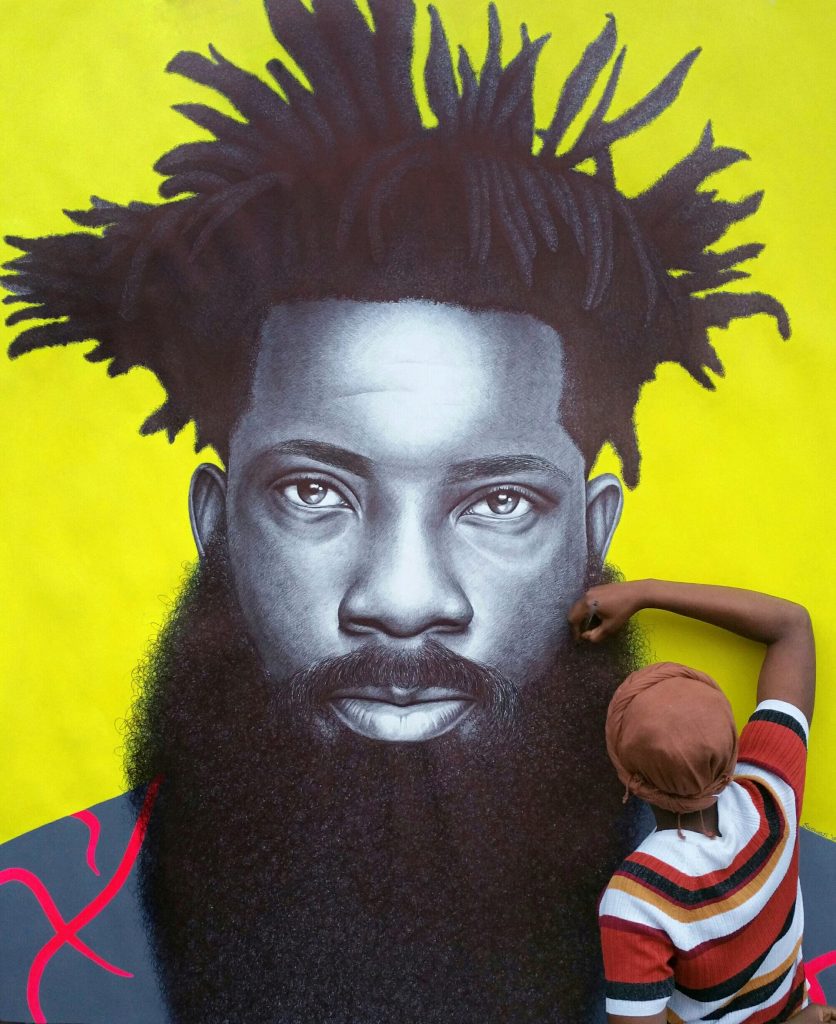
A.K: How do you select the figures you depict?
J.S: Generally, I’m inspired by body language and expression. But recently, I’ve been inspired by identity; how identity plays a role in expression and how a person’s expression affects the way their communication is received by another. From experience, I’ve realized it’s not about how people dress, and I’m learning not to judge people by how they look. That’s where I get my kick from at the moment. It’s a very extensive topic. I can be on this topic for another 10 years because there are so many connecting topics to it.
A.K: Do you personally know most of the figures, that is your subjects?
J.S: I know a few of them personally. Before, I would organize photo sessions and get the models to try poses that struck me. It’s a lot of money. I had to pay everybody—photographer, some of the models, extras—and I might get inspired by only one picture from the whole shoot. But now, I go on Instagram to find inspiration. Some photographers I follow have mastered the art of capturing body language and human expression in a way that speaks to me, so I follow their work. If I find a photograph that hits me, I’ll just slide into the photographer’s DM, introduce myself and ask for permission to use the work as a reference. I’ve now built a relationship with most of these photographers.
A.K: You depict mostly women. Is this a political decision?
J.S: I mostly depict women because women have the most honest and vulnerable expressions. This is not usually the case with men. Men are usually very guarded and put a lot of effort into masking their vulnerability. At the core, every human being has the capacity to feel and show all emotions, but society has taught men to be ashamed to show certain emotions. They have made these emotional expressions a ‘woman thing’. Emotions that show vulnerability are automatically for women while emotions that show aggression are for men. For me, these restrictions take away from a person’s whole experience of humanity. In my work, I address issues of identity, body language, perception and emotional expression. I study their effect on communication. This automatically means I am exploring different layers of vulnerability and women are not afraid to be vulnerable. Once in a while, I see vulnerability in a man and I am inspired.
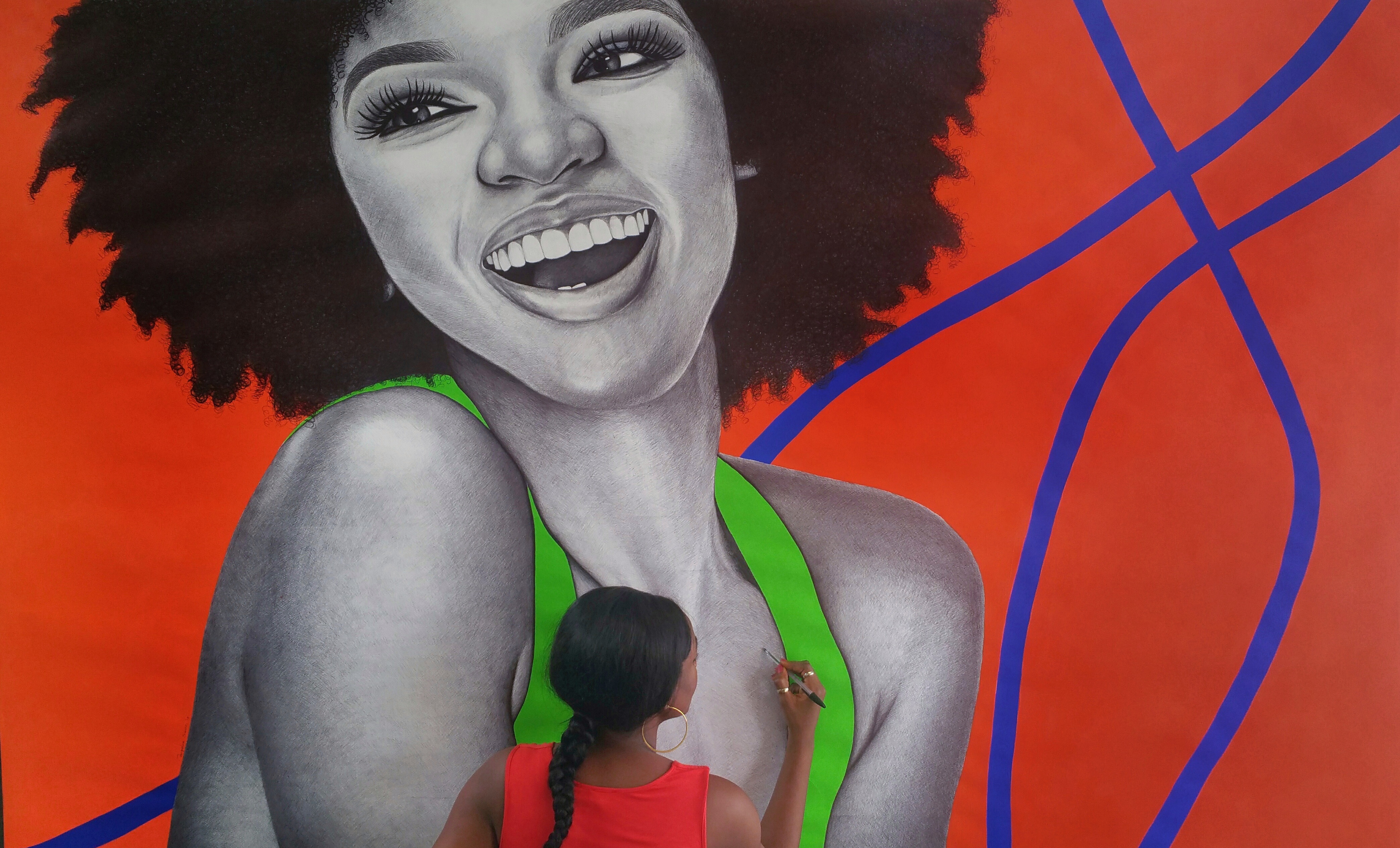
A.K: What do you try to communicate through your art?
J.S: As I continued to explore the intricacies in the drawings, I started developing a narrative around my work. To start with, if you look at my work with a magnifying glass, you’ll see that it’s in layers. I start drawing in layers, and then, I shade in layers. It’s a layering process of one stroke over another over another. I call them bases. At times, when something is really dark, I have about twenty bases there. My art is based on how I experience life and when I was developing the narrative around my work, it dawned on me that generally life is based on our experiences. How the same things can have different meanings to different people; how the same sentences can mean different things to different people because of their experiences. The layers of experiences are what make us who we are. I use the layering process as a metaphor for the different experiences we encounter. In each piece I’m telling a story. I don’t want you to see just a beautiful person, but someone you can identify with. We might look different as human beings, but we are the same. Experiences carve us and make us unique. Irrespective of gender, race, religion, experiences bind us together. That’s what I’m focusing on in my work.
A.K: What is it like navigating the Lagos art scene?
J.S: As of yet, I have not really explored the Lagos art scene. Most of my recent activities have been outside the country. But I am looking forward to doing that soon.
A.K: You are being represented by American-based, Avant Gallery with spaces in Miami and New York City. What opportunities have that brought to you?
J.S: Being represented by Avant Gallery has been a very humbling and overwhelming experience for me. The ability to connect with new audiences and observe how my work makes impact in their lives, even though the stories I tell are inspired by my immediate environment (Nigeria), is simply amazing. Also, I got the opportunity to participate in several art fairs in America. This has opened up my work to new audiences and experiences. Finally, I have a new and exciting international collector base and more collaborations on the way.
A.K: Do you interact with other pen artists?
J.S: I follow a couple of ballpoint artists whose drawings are simply inspiring: Enam Bosokah from Ghana and hyperrealist Oscar Okunu, here in Nigeria.
A.K: Who and what inspires you?
J.S: I am inspired by life experiences, most of which are mine, and the emotional responses to various experiences by other people. I am also inspired by several visual artists. However, Jeff Koons and Njideka Akunyili Crosby’s work hit me every time. Jeff Koons, for example, always have something playful about his work especially in his colour representation. And I am forever loving the intricacy of design, the use of different media and the attention to detail in Njideka’s work. It is simply amazing.
A.K: Your work brings to mind Amy Sherald’s portraits. Is she an inspiration?
J.S: I think it’s just a coincidence. I do love Amy Sherald’s work though, especially for its simplicity and her attention to detail.
A.K: Are you content with being known as a ‘ballpoint pen artist?
J.S: At the moment, I’m a ballpoint pen artist. I don’t know what I’ll be doing ten years from now. But right now, I have cartons and cartons of pens I intend to use. I’m still exploring this style and I’m quite passionate about it. For now, I want to be known as a ballpoint pen artist. When I meet people, I don’t mention painting. I tell them I’m a ballpoint pen artist. That challenges you to realize that my works are not traditional paintings. Art is always evolving and I don’t know whether I would choose to express myself differently in twenty years. But right now, this is what I want to do. I haven’t explored it the way I would like to. There are still so many ideas in my head.





Great work ??..simple and clear exposition of your style got me hooked to read on.
That’s my girl!!! In whom I am well pleased!